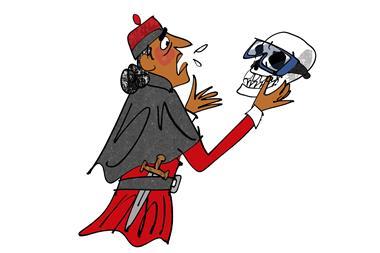'Every man has his price,' said Robert Walpole
’Every man has his price,’ said Robert Walpole, the 18th century statesman regarded as the first Prime Minister of Britain. So, what is it? Is it reasonable, practical or ethical to assign a value to someone’s life, be it an assessment of their worth as a human being - or just simply the stuff they’re made of?
There are those who would say that a body, a system a billion times more complex than the most powerful supercomputer, cannot be simply tagged and is in effect priceless. This complicates matters somewhat, so let’s stick to the basics. One would quite reasonably expect, given a comprehensive list of components, to be able to assign a material worth to said supercomputer. Ignoring manufacturing costs, we’re simply down to raw ingredients - silicon, plastics and the like. For the majority, manufacturing costs for a baby are fairly small, so in the same way why not ignore them and simply get an Aldrich shopping list for one person?
Carey Young, a contemporary London-based visual artist, has done just this. Inventory is currently being exhibited in Lisbon and is, in one sense, a satirical look at commoditisation of the body. With the help of two chemistry academics, John Emsley of Cambridge University and Ilya Eigenbrot of Imperial College London, Young calculated the mass of each chemical element present in her body, having weighed herself on the date of commission. Using the cheapest available chemical in each case that was ’pure enough’ for the requirements, she and the scientists arrived at a market value for her body based on prices from Sigma Aldrich and BOC Gases: £13,003.23.
Part of the installation is the breakdown of the elements in Young’s body by mass and cost. Number one on the list by weight, predictably, is oxygen, representing 33kg and £36. Perhaps unpredictably carbon (number two) accounts for over 90 per cent of the total cost: over £12,000 for about 12kg. The particular form used - a glassy, spherical powder, 99.95 per cent pure - comes in at £78 per 50g. Using cheaper forms such as graphite would have ’in an aesthetic sense weaken[ed] the entire project.’
Young’s work is inspired by writings of a French philosopher, Georges Bataille. On the subject of ’man’ he quotes the British chemist Charles Henry Maye, who estimated the elemental composition of the human body and its relative market worth. ’The amount of fat found in the body of an average human being would be enough to make seven pieces of soap. There is enough iron to make an average nail, enough sugar to sweeten a cup of coffee. The phosphorus would yield 2200 matches; the magnesium would be enough to take a photograph. There is also some potassium and sulfur, but the amount is too small to be of any use.’ His 1929 approximate sum totalled 25 francs – quite a difference, although you don’t need to look much further for different answers. A thirty-second internet search will give you $4.50, $3.50 or even nothing, depending on how it’s calculated. In medical terms (ethics and legality aside) the cost of an entire human body for transplants and transfusions adds up to around $45 million, according to an article in Wired magazine. One particularly morbid website boasts a ’cadaver calculator’ which assesses the worth of your corpse to medical science, based on some physical and lifestyle criteria. Estimates range between four and nine thousand dollars.
Young’s work is more than skin deep, however. She explains: ’It is a very reductive way to see human life... The work creates a linkage between my body and the commodity markets... [it] also considers the "value of the artist", again by over-literalising and thus satirising the process of providing an answer.’ It is a thought-provoking installation - is there any way one can put a price on life?
’There is no value in life except what you choose to place upon it...’ - Henri David Thoreau












No comments yet